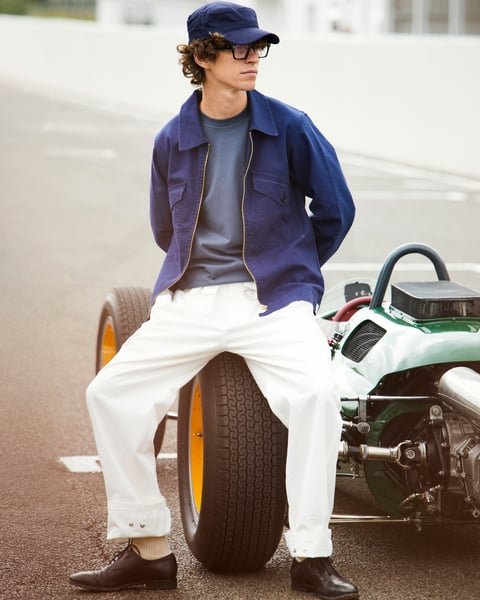Fangio’s 1957, Part 7: Pescara Grand Prix - Moss bites back
Pescara on the Adriatic coast had a starred motorsport history. First won by Enzo Ferrari in 1924, its Coppa Acerbo numbered Tazio Nuvolari, Bernd Rosemeyer and Rudolf Caracciola among its victorious pre-WWII alumni. Its sprawling 16-mile road circuit, however, was bordered by every conceivable hazard as it sped along the coast and wound through several villages of the Abruzzo foothills and thus was reaching the end of its useful life when it was invited to bolster a depleted world championship calendar.

Fangio, whose father had emigrated to Argentina from Abruzzo, had won here in 1950 – after doing his utmost to usher hobbled Alfa Romeo team-mate Luigi Fagioli over the line – and now he set the pace during Saturday’s two practice sessions. His Maserati 250F on pole by more than 10 seconds, the locals anticipated a home victory.
But Stirling Moss knew the circuit, too. He had been leading handsomely in 1954, having been on pole by 2 seconds, when his 250F’s lubrication system sprang a leak. Now, as was his wont and right as the team’s number one, he tried all four Vanwalls present and found Stuart Lewis-Evans’ to be the fastest on the two long straights and, running on Armstrong dampers, the most settled over the incessant bumps.
The British cars had been all at sea at the Nürburgring a fortnight before and as a result, much suspension work had been done since. This was about to pay dividends.
The 9am start – to avoid the worst of the sun – was chaotic, with mechanics caught unawares having to duck and dive as the cars accelerated. Luigi Musso took the lead in the only Ferrari present, the Roman having persuaded Enzo to send it despite an ongoing dispute with the government, papacy and national governing body over ‘Fon’ de Portago’s calamitous accident in May’s Mille Miglia. Musso had asked Vanwall for a drive but been politely declined.
Moss’s green machine took the lead on the second lap and though Musso kept him honest – until the oil tank began to peel from the tip of the Ferrari’s tail – it pulled away relentlessly, matching Fangio’s pole time on the ninth lap. By which time the latter was a lonely and increasingly distant third. Word was that Officine Alfieri Maserati had decided against risking the nitro fuel brew so potent over a single lap in a 290-mile GP held during a heatwave. Whatever the reason, Fangio was powerless to respond to Moss, whose slippery-quick car had a 10mph advantage in top speed.
Fangio did, however, finish second – though his promotion at Musso’s expense was a double-edged sword. The latter’s engine finally seized on lap 10 and Fangio slid wide on the slick and buckled a rear wheel against a kerb. His resultant slow lap and pit stop to replace both nearside wheels allowed Moss the time to make a precautionary stop – the Vanwall’s oil pressure was fluctuating – and yet still win by more than three minutes.
Moss poured water over Fangio’s pate post-race and playfully rubbed it in. The energetic Englishman then grabbed a quick bite before rushing to Rome to catch a plane. After several delays – his hard-pressed Fiat hire car blew a head gasket and his BEA flight was cancelled – he took off at 4.30am. Four days later he was setting world records in MG’s futuristic EX181 on the glaring Bonneville Salt Flats of Utah.
The differences between the world’s two best drivers were becoming ever more apparent.
Photography courtesy of LAT Images
fangio
Maserati
250f





